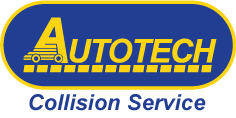Here at Autotech Collision Center, we frequently get asked by New Jersey drivers what certain repairs are and what they mean for your car. Whether it’s been a few years or only a few months since you last got your car repaired, it’s important to know what certain repairs mean not just for your car, but for the safety of you and whoever else is in your car. Advanced Safety Technologies, commonly known as ADAS, has been one of the biggest reasons why car repair has gotten incredibly complex over the past few years. Because of the complexity involved, car manufacturers release specific procedures known as OEM (Original Equipment Manufacturer) repairs for a technician to follow. These are the safest and highest quality for your car, making sure everything is repaired the way it should be.
Unfortunately, even with how important these repairs are, many body shops will neglect them and repair cars they have for years. Technicians will do this to maintain a profit while feeling the pressure from insurance companies refusing to pay for specific steps or repairs, like OEM repairs. Thus, putting you at risk of getting injured in a second accident and the advanced safety features in your car to no longer function properly.
Recently, Vehicle Collision Experts CEO Mark Olson stated, “how the OEM built the vehicle and how you fix it might not be the same, and a repairer can’t assume that duplicating what they saw on the vehicle will work.”
Assuming during any part of the repair process is the worst thing a technician can do, and yet it happens. This is why it’s so important you know what is going to happen to your car during the repair process because your safety needs to be a top priority. Any assumption in the repair process will cause severe consequences.
Approaching Repair On Quarter Panels
Let’s take, as an example, repairs for quarter panels. Every OEM repair would instruct a technician to use an entirely new panel, not a previously used one with existing weld nuggets from another vehicle. Approaching this type of repair on quarter panels, a technician needs to go through the following checklist:
- What’s it made of?
- What’s it attached to?
- Sectioning location?
- Attachment methods (such as remove and replace)?
- How do you remove the panel?
- Supporting materials?
- Required tooling and equipment?
The Controversy Behind Quarter Panel Repairs
One of the biggest reasons why there is a lot of commotion over quarter panels in the collision repair world is the Insurance Institute of Highway Safety (IIHS) constitutes this type of repairs as cosmetic. However, quarter panels are vital to the overall structural integrity of your vehicle. Cars that are made out of metals other than steel will usually require welding (i.e., heat). If technicians replace the quarter panel on your car with a used quarter panel, the plug weld will be too big.
Olson also stated, “any holes drilled in a used quarter panel might be 10 mm, perhaps 10.5 after deburring. As the OEM wants only 8 mm plug welds, it’s officially impossible to deliver the repair with a used quarter panel.”
Bigger welds are not better for your car when it comes to collision repair. Yet, some technicians will argue, “when this thing gets hit, it’ll never break.” However, we aren’t talking about a repair that is strong, yet not what the manufacturer calls for. You need a repair that will last, which is why your vehicle must be repaired precisely how the OEM said to do it.
Used quarter panels have been tempered with or heated multiple times in the welding process, more than you’d ever see on a new quarter panel. It doesn’t take a well-trained technician to see used quarter panels can’t provide the same level of safety a new quarter panel would.
Other Reasons Why Used Quarter Panels Won’t Work
As stated in Repairer Driven News, an additional reason why used quarter panels wouldn’t work is because of the inability to follow OEM repair procedures. Repairer Driven News also stated, “…the idea of producing holes (such as spot welds on a quarter panel) outside of OEM tolerances also means the repair would be a nonstarter.”
An additional reason would be due to something known as “work hardening.” What this means is some quarter panels are installed with rolled hem flanges that have eventually been work-hardened. This happens when the metal is unrolled and rerolled to the point where it can’t be rolled back out. Think of what it’s like when you’re twisting a paper clip over and over. Eventually, it weakens, and the metal clip breaks. This the process of work hardening on used quarter panels.
To learn more about what’s wrong with used quarter panels, check out the video shown below from Collision Hub that goes in-depth about these repairs.
Who In New Jersey Knows How To Perform Quarter Panel Repair The Right Way?
Here at Autotech Collision Service, we strongly advise against used quarter panels in the repair process because of its inferior quality to simply repairing your car exactly as the manufacturer would instruct. Too many technicians are cutting corners in the repair process, putting your safety at risk with a repair that doesn’t follow what the OEM calls for. This is why it’s important you take your car somewhere that is OEM certified.
We are OEM certified in over a dozen different brands because we feel New Jersey drivers deserve the best when it comes to car repair. We have been serving New Jersey for nearly 30 years and aren’t stopping anytime soon!
If you’d like to schedule an appointment or to get an online quote, click any of the buttons below! Or, feel free to give us a call at (856)-232-1833. We look forward to hearing from you!






